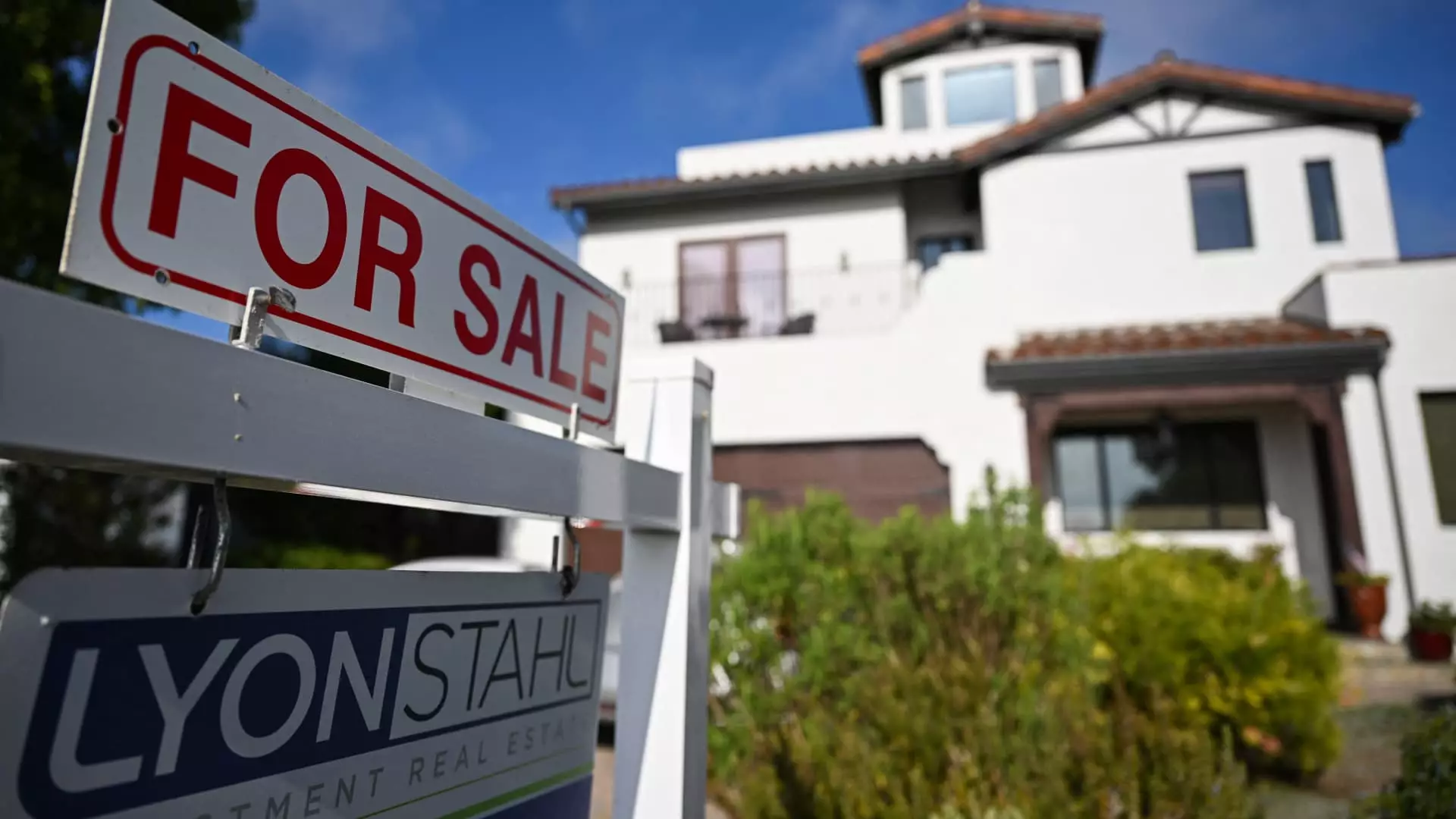Mortgage interest rates took an unexpected nosedive recently, with the widely-utilized 30-year fixed loan rate plummeting by 12 basis points to 6.63%. This is the lowest point we’ve seen since October, a glimmer of hope amid a turbulent financial landscape. The sudden shift in the mortgage market is primarily attributed to the aftermath of the Trump administration’s tariff announcement, which not only roiled the stock market but also sent many investors seeking refuge in government bonds. With bond yields dipping, mortgage rates inevitably trailed close behind, reflecting this seismic shift in investor behavior.
However, the reality is a complex web of conflicting indicators that paint a less than rosy picture for potential homebuyers. Just as rates have dropped, the housing market is dealing with alarming price increases. This paradox reveals the dangers lurking below the surface: an easing in rates doesn’t mean that homes magically become affordable. In fact, the average payment for U.S. homebuyers has hit America’s collective back pocket hard, soaring to an astonishing $2,802 monthly—marking an all-time high. It raises the question: are we truly seeing a recovery or merely a dip in one of many peaks amidst an enduring crisis?
Homebuyers Trapped in a Financial Quagmire
Though the decline in mortgage rates triggers excitement within the housing market, it does little to alleviate the exasperating state of affordability that plagues buyers. A staggering 70% of U.S. households—about 94 million—are locked out of even modest homes priced around $400,000. According to dire predictions from the National Association of Home Builders, the estimated median price of a new home in the near future could soar to approximately $460,000. This indicates a persistent gulf between income and housing prices; a reality that threateningly narrows the list of viable homebuyers drastically.
That means a household looking to secure a modest, $200,000 home needs to bring in a minimum income of $61,487. Alarmingly, around 52.87 million households in the U.S.—a substantial portion—earn no more than the required threshold. This escalation not only threatens the American Dream but directly contributes to social stratification, ultimately pressing the lower and middle classes further down the economic ladder.
Market Dynamics: The Erosion of Supply and Demand
Add to this the troubling fact that, while there may be a reported uptick in home listings—10% more than the same time last year—the properties available often do not align with what buyers are desperate for. An unsettling reality emerges: a growing supply does not equate to affordable options, as chronic underbuilding since the Great Recession exacerbates housing shortages at the lower price points most in demand.
Local markets are responding unevenly to current pressures. In Northern Virginia, for example, some sellers are eager to hit the market, motivated by fears of economic uncertainty or a need to relocate closer to their workplaces. Yet, this brisk activity in one locale somehow exists alongside striking declines in markets such as Jacksonville and Miami, where pending sales have fallen sharply and homes linger longer on the market. This dissonance in market dynamics creates an environment fraught with uncertainty for buyers, who are left navigating through a maze of inconsistent availability and rising prices.
The Sluggish Spring: Buyers Hold Back
Early indicators suggest that the spring housing season may not be as vibrant as many hoped. Pending sales are witnessing a 5.2% drop compared to last year in major metropolitan areas, highlighting a cautious approach from would-be buyers amid rising costs and economic anxieties. It’s a classic case of buyers pausing, evaluating whether the sky-high costs warrant the leap into home ownership against the backdrop of increasing financial strain.
This market ‘rebalancing,’ as described by Danielle Hale of Realtor.com, reflects a broader hesitance among consumers who find themselves torn between escalating prices and acute economic concerns. The trend is significant enough to invoke troubling implications about how our society values home ownership, stability, and long-term investment in personal and community wealth.
Navigating this tumultuous landscape calls for a pragmatic assessment of what home ownership has come to mean in today’s America. As prices peak, combined with an ever-shrinking pool of eligible buyers, one can’t help but wonder if we are witnessing an evolution of the market that could have lasting repercussions for generations to come.

